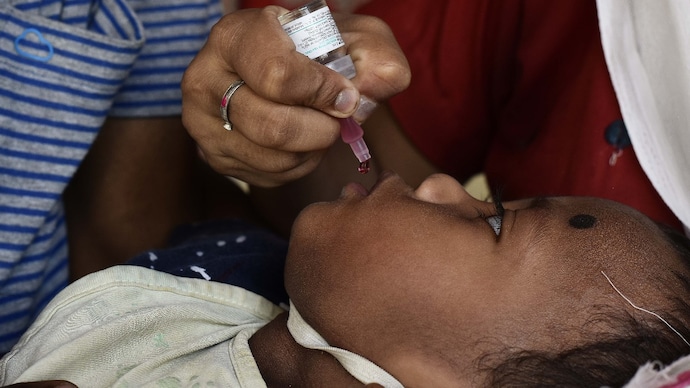Meghalaya polio case traced to vaccine: Know what it means
A case of polio has been confirmed in a two-year-old child in Meghalaya, raising concerns as the World Health Organisation had declared India polio-free in 2014. The infection is vaccine-borne, not wild polio, and the World Health Organisation is investigating it.

A two-year-old child has been confirmed with polio in Meghalaya’s West Garo Hills district. The incident has raised concerns as India was declared polio-free by the World Health Organisation (WHO) in 2014, while the last case was reported in 2011.
The health ministry said, however, this is not a case of wild polio but rather vaccine-derived polio, in which the infection occurs in people with low immunity.
The World Health Organisation has been informed about the matter and investigation is underway. WHO doctors have reached Tikrikilla to collect samples.
What is vaccine-derived polio?
Poliomyelitis or polio is a highly infectious disease caused by the poliomyelitis virus. It is usually spread by the fecal-oral route, usually by consuming contaminated water or food. It is a highly contagious virus that can cause paralysis.
Symptoms of poliovirus can include fatigue, fever, headache, vomiting, diarrhea or constipation, sore throat, stiff neck, pain or tingling in the arms and legs, severe headache, and sensitivity to light (also called photophobia).
There are three types of poliovirus: wild poliovirus type 1 (WPV1), wild poliovirus type 2 (WPV2) and wild poliovirus type 3 (WPV3).
All these strains are phenotypically similar.
Historically, cases of polio have generally been caused by wild polioviruses.
In 1988, the Global Polio Eradication Initiative was launched for uniform vaccination. While India was declared polio-free in 2014, only 12 cases of paralysis caused by the wild poliovirus were reported from just two countries: Pakistan and Afghanistan.
Although the number of wild poliovirus cases declined, cases of another type of polio increased: vaccine-induced polio.
Types of polio vaccines
There are two types of polio vaccines: one given orally and the other by injection.
Oral Polio Vaccine (OPV): It is the most widely used vaccine in India. OPV contains a weakened form of the poliovirus, which helps stimulate an immune response without causing disease. It is given orally, usually in the form of drops. OPV is used in mass vaccination campaigns, such as National Immunisation Days (NIDs).
Inactivated Polio Vaccine (IPV): IPV contains an inactivated (dead) version of the poliovirus and is given via injection. IPV is included in the routine immunization program in India and is often given in combination with other vaccines.
Both types of vaccines are administered in India. OPV is usually preferred because it is easier to administer.
Since the oral polio vaccine uses a weakened form of the virus that does not cause disease, it can still replicate. A very rare but serious adverse side effect of OPV is vaccine-associated paralytic poliomyelitis (VAPP), which cannot be caused by IPV.
After OPV, vaccine virus excreted in the feces can spread to others, causing vaccine-induced polio.
Over time, this virus can mutate and potentially spread, causing paralysis in communities with low immunity levels.
According to the US Centers for Disease Control and Prevention (CDC), in 2023, 524 polio cases in 32 countries were linked to vaccine-derived poliovirus.







